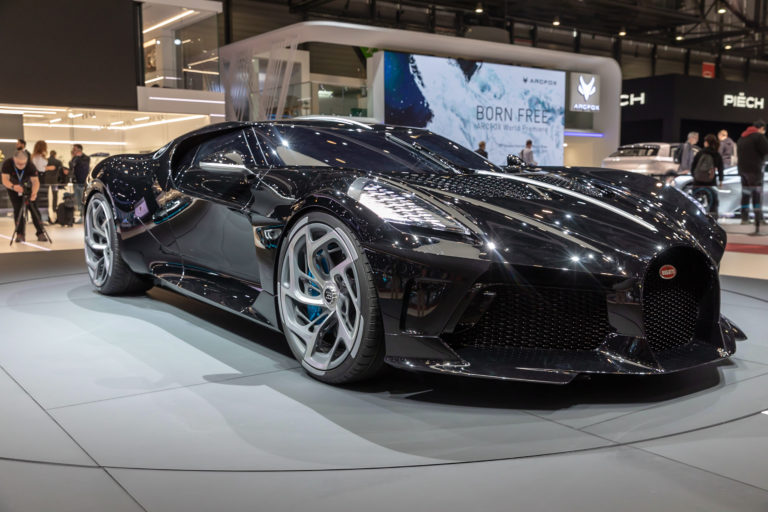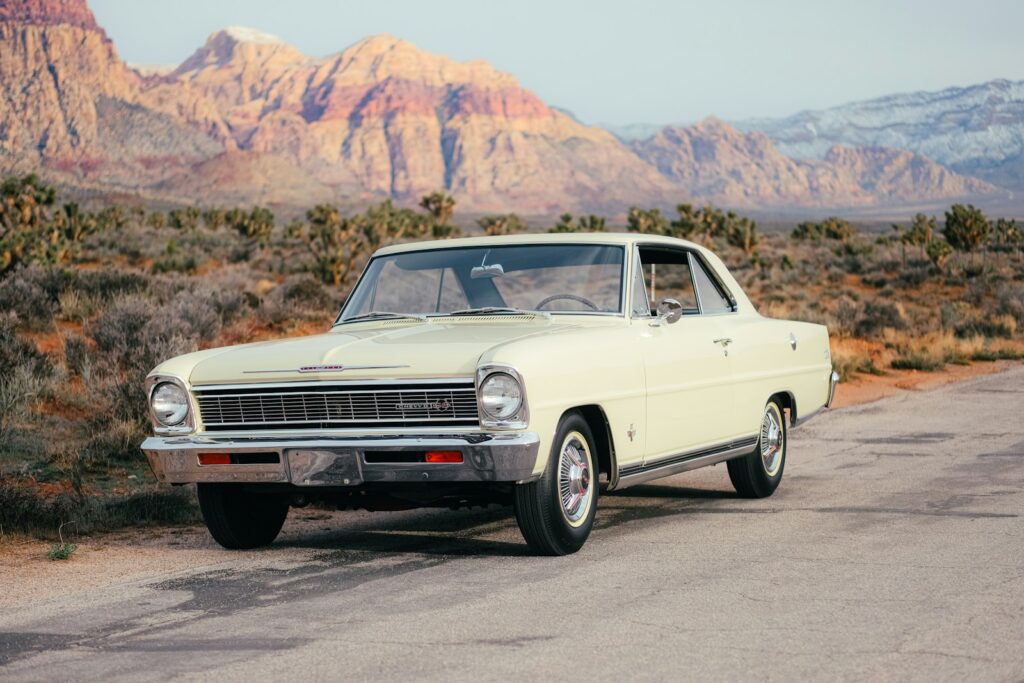
If you’re anything like us, you probably catch yourself yearning for those incredible times when cars had a lot more swagger, more curves, and less of the angular, aggressive lines we see from most auto manufacturers today. The 1960s? Oh, they were the absolute golden age of automotive design, where roaring V8s and hair-raising performance weren’t just dreams, they were hitting the roads in style!
This vibrant decade wasn’t just about good looks; it brought impressive innovations straight from the racetrack to our daily drives. We saw everything from fabulous pony cars to beastly muscle machines, and from sleek sports cars to timeless luxury icons. The 1960s gave birth to some of the most exotic cars the automobile industry has ever created, vehicles so legendary that even folks who aren’t die-hard car fanatics can instantly recognize them.
It’s this “Golden Era” that we genuinely miss today. And driven by that deep nostalgia for the automobiles of times past, we’ve carefully rounded up 14 of the most iconic classic cars from the 1960s. Get ready to take a trip down memory lane and marvel at these unforgettable beauties!
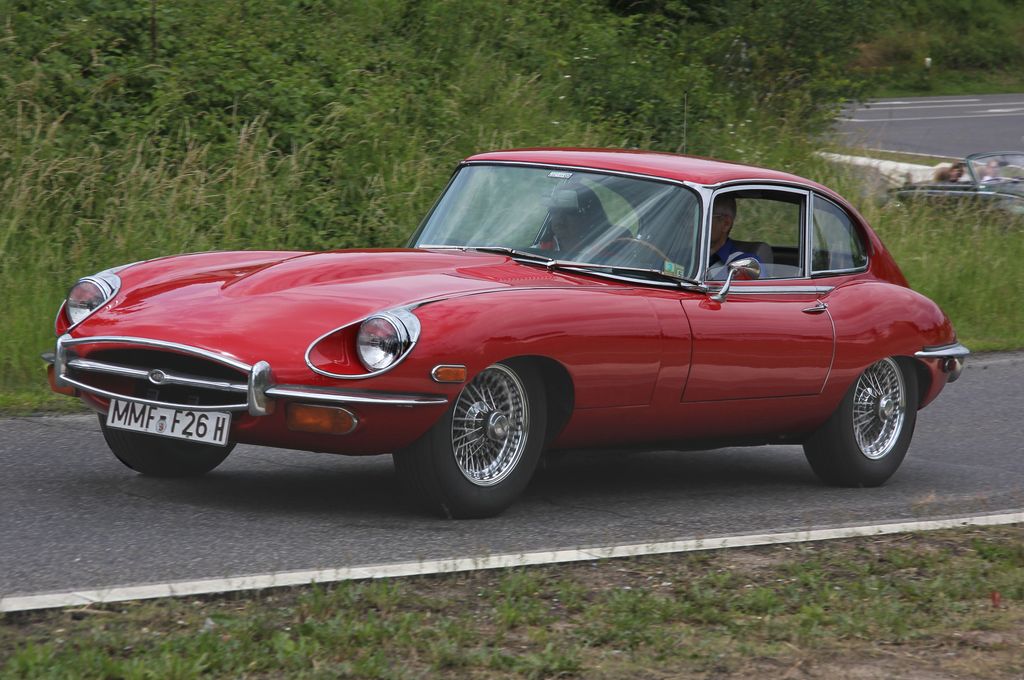
1. **Jaguar E-Type:** Kicking off our list is a car so stunning, it famously moved Enzo Ferrari, one of the world’s most renowned sports car manufacturers, to declare it “the most beautiful car ever made.” The Jaguar E-Type, revealed in 1961, truly possessed a grace that very few other vehicles have even come close to reproducing. Its excessive beauty wasn’t just for show; it was a direct result of the aerodynamic shape meticulously crafted by Jaguar’s aerodynamicist, Malcolm Sayer, winning the hearts of countless automotive connoisseurs.
But the E-Type wasn’t just a pretty face; it was an absolute powerhouse too! Built on a race-oriented platform that was incredibly ahead of its time, it garnered even more attention and proved to the entire automotive industry that it was indeed possible to bring such a high-performance car to the masses. It sported a smooth inline-six engine and advanced disc brakes, combining race-car technology with unbelievably graceful proportions.
What’s even more amazing? This masterpiece was also extremely affordable, selling for only a fraction of the cost of other exotic cars of that era. Its timeless design and performance capabilities continue to be celebrated by collectors and admirers, embodying the elegance and innovation that truly defined the 1960s motoring landscape.
Car Model Information: 1971 Jaguar E-Type Restomod
Sp: uk
Name: Jaguar E-Type
Caption: 1961 E-Type Series 1 3.8-Litre, the first production model of this open two-seater
Aka: Jaguar XK-E , Jaguar V-12
Manufacturer: Jaguar Cars
Production: 1961–1974
Class: Sports car
Predecessor: Jaguar XK150
Related: Jaguar D-Type,Jaguar XJ13
Successor: Jaguar XJS
Layout: FMR layout
Assembly: Coventry,England
Designer: Malcolm Sayer
Categories: 1970s cars, 2+2 coupés, All articles with dead external links, All articles with specifically marked weasel-worded phrases, All articles with unsourced statements
Summary: The Jaguar E-Type, or the Jaguar XK-E for the North American market, is a British front mid-engined sports car that was manufactured by Jaguar Cars Ltd from 1961 to 1974. Its sleek appearance, advanced technologies, high performance, and competitive pricing established it as an icon. The E-Type’s claimed 150 miles per hour (240 km/h) top speed, sub-7-second 0 to 60 mph (97 km/h) acceleration, largely unitary body construction, front and rear independent suspension with disc brakes, mounted inboard at the rear, and rack-and-pinion steering spurred industry-wide changes.
The E-Type was based on Jaguar’s D-Type racing car, which had won the 24 Hours of Le Mans for three consecutive years beginning in 1955.
The E-Type employed what was, for the early 1960s, a novel design principle, with a front subframe carrying the engine, front suspension and front bodywork bolted directly to the body tub. No ladder frame chassis, as was common at the time, was needed and as such the first cars weighed only 1,315 kg (2,899 lb).
It is rumored that, on its debut on 15 March 1961, Enzo Ferrari called it “the most beautiful car ever made”, but this statement is not fully confirmed. In 2004, Sports Car International magazine placed the E-Type at number one on their list of Top Sports Cars of the 1960s. In March 2008, the Jaguar E-Type ranked first in The Daily Telegraph’s online list of the world’s “100 most beautiful cars” of all time.
Get more information about: Jaguar E-Type
Buying a high-performing used car >>>
Brand: Jaguar Model: E-Type
Price: $64,900 Mileage: 2,455 mi.
Read more about: 16 Iconic Classic Cars: Why They Remain Timeless and Outshine Modern Trends
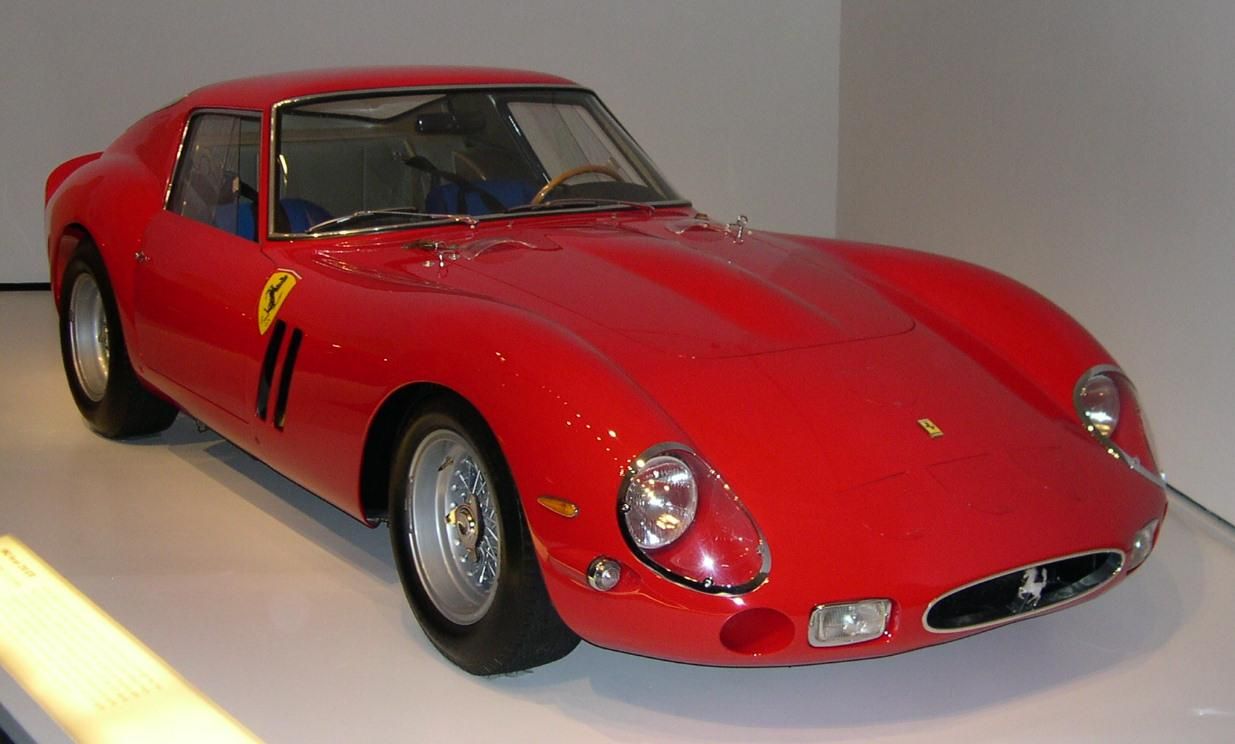
2. **Ferrari 250 GTO:** When we talk about automotive legends, the 1962 Ferrari 250 GTO simply has to be at the top. For many, it’s not just the most iconic car from that golden decade, but quite possibly one of the most gorgeous cars ever produced, period. After its launch in 1962, it quickly became a legend on the circuit, dominating racing in its class.
Beyond its formidable performance, people absolutely adored the 250 GTO for its astonishing two-door Berlinetta body style. Those insanely beautiful and curvy lines seemed to speak of dreams come true, capturing the imagination of enthusiasts worldwide. It’s no wonder its stratospheric auction prices have become legendary, truly reflecting its status as an automotive icon.
Though it stayed in production for a relatively short time, between 1962 and 1964, that brief period was more than enough for it to cement its place as a true legend of automotive history. Its combination of performance and beauty continues to captivate collectors and enthusiasts, marking it as a pinnacle of 1960s Italian sports car design.
Car Model Information: 2024 Genesis GV70 2.5T AWD
Name: Ferrari 250 GTO
Caption: 1963 Ferrari 250 GTO (chassis 4153GT)
Manufacturer: Ferrari
Production: 1962–1964,(36 produced)
Designer: Giotto Bizzarrini,Scaglietti
Class: Sports car
BodyStyle: berlinetta
Related: Ferrari 330#330 LMB,Ferrari P#250 LM
Layout: FR layout
Engine: 2,953 cc,Ferrari Colombo engine#250,Overhead camshaft#Single Overhead camshatf,Weber carburetor,Compression ratio
Powerout: 300 PS
Abbr: on
Order: flip @ 5500 rpm
Transmission: Manual transmission
Wheelbase: 2400 mm
Length: 4325 mm
Width: 1600 mm
Height: 1210 mm
Weight: convert
Predecessor: Ferrari 250 GT SWB
Successor: Ferrari 250 LM,Ferrari 288 GTO
Categories: All articles lacking reliable references, All articles needing additional references, All articles with bare URLs for citations, All articles with unsourced statements, Articles lacking reliable references from March 2022
Summary: The Ferrari 250 GTO is a grand tourer produced by Ferrari from 1962 to 1964 for homologation into the FIA’s Group 3 Grand Touring Car category. It was powered by Ferrari’s Tipo 168/62 Colombo V12 engine. The “250” in its name denotes the displacement in cubic centimeters of each of its cylinders; “GTO” stands for Gran Turismo Omologato, Italian for “Grand Touring Homologated”.
Just 36 of the 250 GTOs were manufactured between 1962 and 1964. This includes 33 cars with 1962–63 bodywork (Series I) and three with 1964 (Series II) bodywork similar to the Ferrari 250 LM. Four of the older 1962–1963 (Series I) cars were updated in 1964 with Series II bodies.
When new, the 250 GTO cost $18,000 in the United States, with buyers personally approved by Enzo Ferrari and his dealer for North America, Luigi Chinetti. This model has since become highly desired by automobile collectors and sales have repeatedly set price records. The current record for world’s most expensive Ferrari was set in June 2018 when a 1963 250 GTO (chassis 4153GT) was sold in a private sale for $70 million.
In 2004, Sports Car International placed the 250 GTO eighth on their list of Top Sports Cars of the 1960s, and nominated it the top sports car of all time. Similarly, Motor Trend Classic placed the 250 GTO first on a list of the “Greatest Ferraris of All Time”. Popular Mechanics named it the “Hottest Car of All Time”.
Get more information about: Ferrari 250 GTO
Buying a high-performing used car >>>
Brand: Ferrari Model: 250 GTO
Price: $39,995 Mileage: 20,074 mi.
Read more about: 16 Iconic Classic Cars: Why They Remain Timeless and Outshine Modern Trends
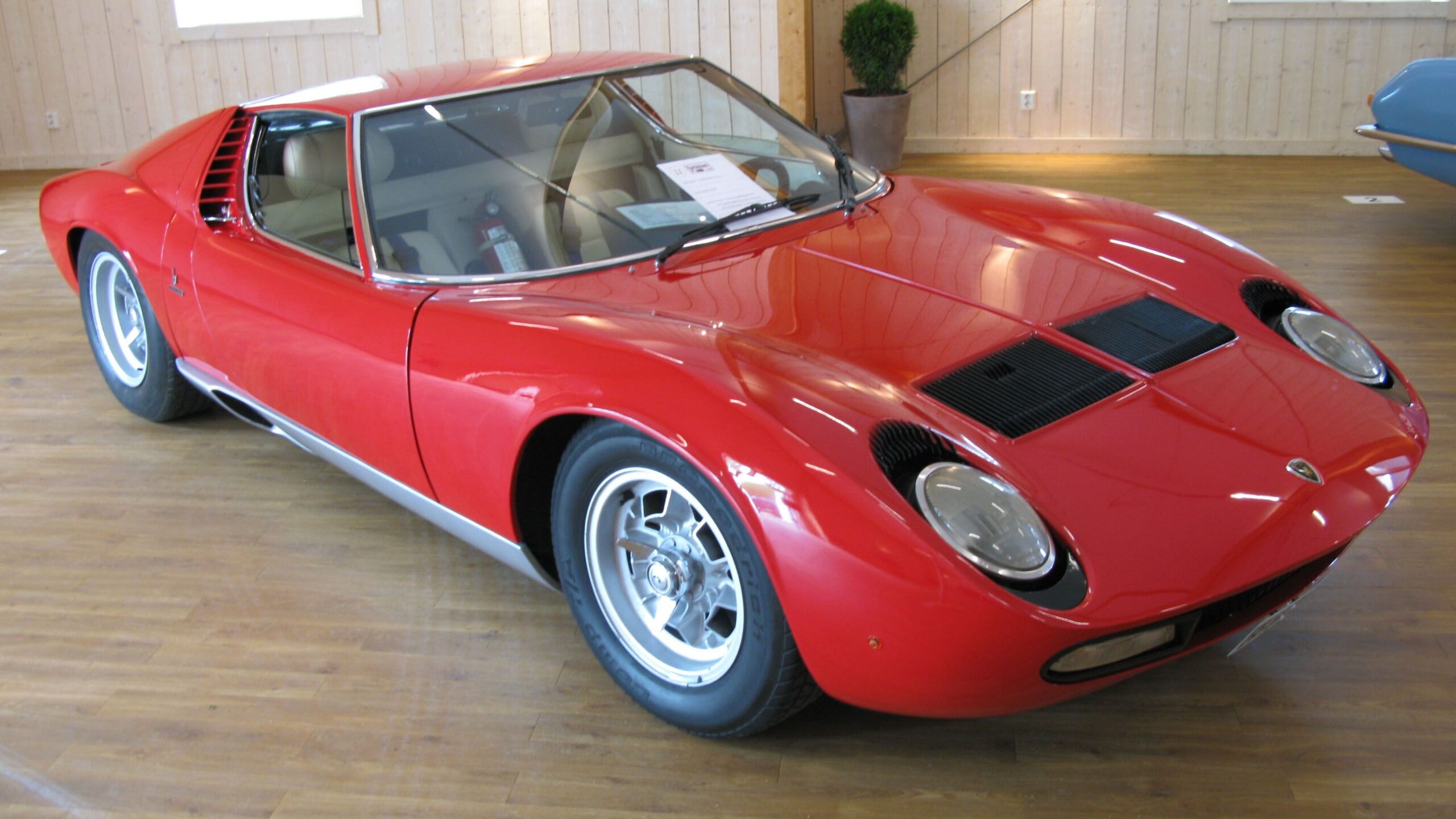
3. **Lamborghini Miura:** Widely hailed as the first true ‘supercar,’ the 1966 Lamborghini Miura completely redefined what exotic performance and styling could be. This incredible machine arrived in 1966 and swiftly rose to fame for both its breathtaking beauty and its absolutely jaw-dropping performance.
The dramatic design, masterfully penned by Marcello Gandini, featured a V12 engine positioned innovatively behind the driver, a groundbreaking mid-engine configuration that captivated the entire world and set an entirely new standard for sports cars. It was truly the progenitor of the supercars we admire today, demonstrating incredible speed with its potent 3.9-liter V12 engine, making it one of the fastest production cars of its time.
The Miura’s combination of beauty and raw performance continues to inspire designers and enthusiasts alike. It has left behind a rich heritage, cherished today by countless people all over the world, and remains a powerful symbol of 1960s Italian automotive artistry, celebrated for its innovation and elegance on the world’s most scenic roads.
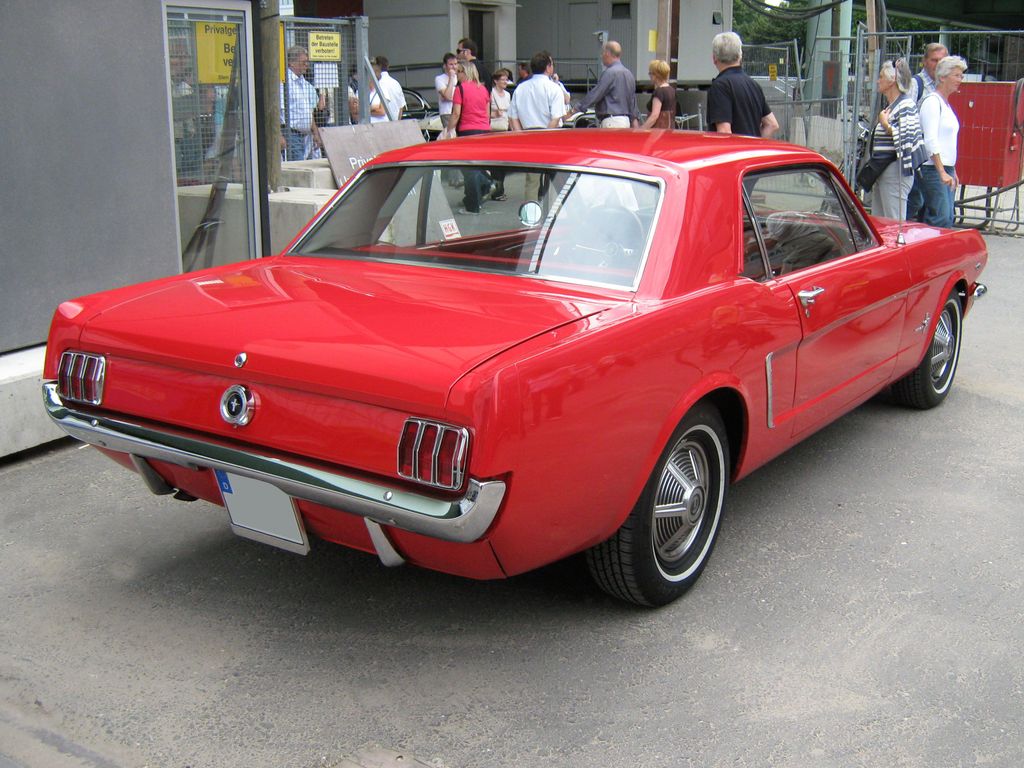
4. **Ford Mustang (First Generation):** When you hear “American muscle car,” the Ford Mustang is undoubtedly the first vehicle that springs to mind. This car wasn’t just popular; it was the car everybody wanted during the 1960s, and for incredibly good reason. It took the world by storm with its irresistible allure and raw power back in 1964, sparking what became known as the ‘pony car’ craze.
The first-generation Mustang, introduced mid-1964, combined sporty looks with massive customization options, making it an instant hit and a cornerstone of American car culture. While its initial iterations might have had unremarkable engines, the subsequent variants came roaring to life with the iconic V8s that would propel the Mustang to the legendary status it so proudly holds today.
Throughout the 1960s and into the next decade, the car received several redesigns, always managing to keep the intimidating and beloved look of the original. Special models like the 1969 Ford Mustang Boss 429, with a semi-hemi 429 engine designed for NASCAR, were some of the wildest Mustangs ever produced, becoming highly collectible due to their low production numbers. The 1967 Shelby GT500, with a 428 Police Interceptor under the hood, perfectly represented the peak of 1960s pony-car excitement, further cementing the Mustang’s legacy as a symbol of power, style, and American automotive innovation.
Car Model Information: 1966 Ford Mustang Base
Name: Ford Mustang
Caption: 2018 Ford Mustang GT 5.0
Aka: Ford T5 (Germany)
Manufacturer: Ford Motor Company
Production: March 1964 – present
ModelYears: 1965–present
Class: Unbulleted list
BodyStyle: Unbulleted list
Layout: Front-engine, rear-wheel-drive layout
Categories: 1970s cars, 1980s cars, 1990s cars, 2+2 coupés, 2000s cars
Summary: The Ford Mustang is a series of American automobiles manufactured by Ford. In continuous production since 1964, the Mustang is currently the longest-produced Ford car nameplate. Currently in its seventh generation, it is the fifth-best selling Ford car nameplate. The namesake of the “pony car” automobile segment, the Mustang was developed as a highly styled line of sporty coupes and convertibles derived from existing model lines, initially distinguished by “long hood, short deck” proportions.
Originally predicted to sell 100,000 vehicles yearly, the 1965 Mustang became the most successful vehicle launch since the 1927 Model A. Introduced on April 17, 1964 (16 days after the Plymouth Barracuda), over 400,000 units were sold in its first year; the one-millionth Mustang was sold within two years of its launch. In August 2018, Ford produced the 10-millionth Mustang; matching the first 1965 Mustang, the vehicle was a 2019 Wimbledon White convertible with a V8 engine.
The success of the Mustang launch led to multiple competitors from other American manufacturers, including the Chevrolet Camaro and Pontiac Firebird (1967), AMC Javelin (1968), and Dodge Challenger (1970). It also competed with the Plymouth Barracuda, which was launched around the same time. The Mustang also had an effect on designs of coupes worldwide, leading to the marketing of the Toyota Celica and Ford Capri in the United States (the latter, by Lincoln-Mercury). The Mercury Cougar was launched in 1967 as a unique-bodied higher-trim alternative to the Mustang; during the 1970s, it included more features and was marketed as a personal luxury car.
From 1965 until 2004, the Mustang shared chassis commonality with other Ford model lines, staying rear-wheel-drive throughout its production. From 1965 to 1973, the Mustang was derived from the 1960 Ford Falcon compact. From 1974 until 1978, the Mustang (denoted Mustang II) was a longer-wheelbase version of the Ford Pinto. From 1979 until 2004, the Mustang shared its Fox platform chassis with 14 other Ford vehicles (becoming the final one to use the Fox architecture). Since 2005, Ford has produced two generations of the Mustang, each using a distinct platform unique to the model line.
Through its production, multiple nameplates have been associated with the Ford Mustang series, including GT, Mach 1, Boss 302/429, Cobra (separate from Shelby Cobra), and Bullitt, along with “5.0” fender badging (denoting 4.9 L OHV or 5.0 L DOHC V8 engines).
Get more information about: Ford Mustang
Buying a high-performing used car >>>
Brand: Ford Model: Mustang
Price: $32,991 Mileage: 98,811 mi.
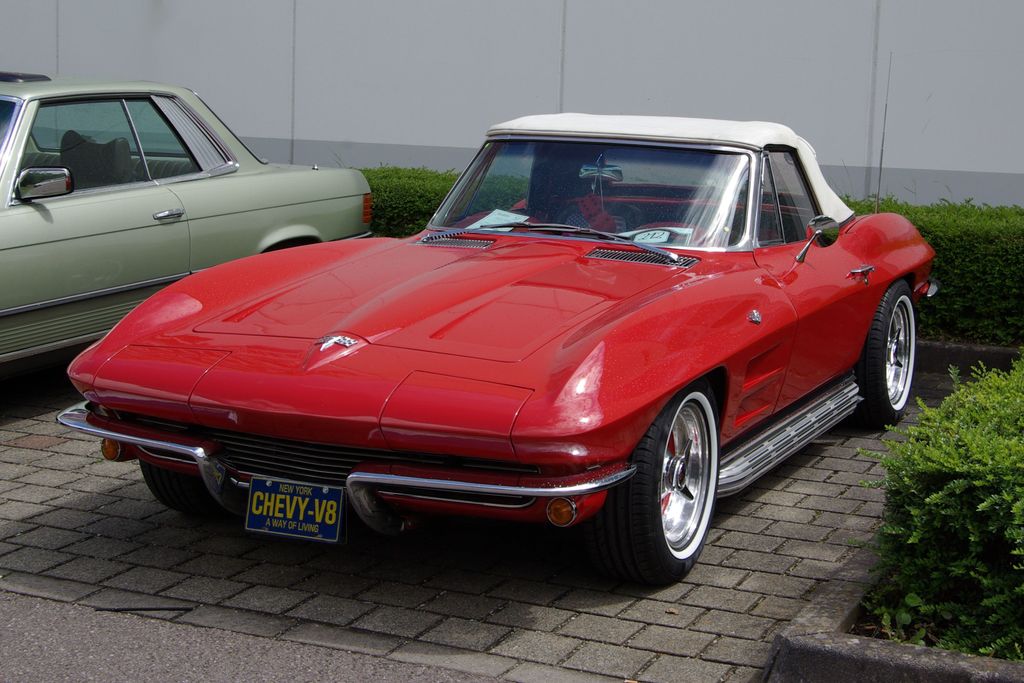
5. **Chevrolet Corvette Sting Ray (C2):** The introduction of the second generation of Chevrolet Corvette, the C2 Sting Ray, in 1963, truly marked another defining moment for the American car scene of the 1960s. This isn’t just “a” Corvette; the 1963 Chevrolet Corvette, with its iconic split-window coupe design, stands out as among the most recognizable Corvettes ever crafted, making it highly sought after by collectors today.
Powering this beast was a roaring American V8 that could give not only American but also the best European cars a serious run for their money. Several engines were available, providing horsepower ranging from 250 with the base V8 to a mighty 360 hp with the top-tier version. Its fiberglass body and revolutionary independent rear suspension truly signaled a technologically advanced future for the American sports car, moving it light-years ahead.
The 1963 model was unique as it was the only year to feature the split rear window, a design that, despite obstructing visibility, makes it extremely desirable for collectors today. This model also had stylish grilles on the hood, though they served no function. Sales were almost evenly split between the coupe and convertible options, proving its widespread appeal and its enduring legacy as a symbol of 1960s American automotive creativity.
Car Model Information: 2020 Honda Accord EX-L 1.5T
Name: Chevrolet Corvette (C2)
Caption: 1963 Chevrolet Corvette Sport Coupe
Manufacturer: Chevrolet
Aka: Chevrolet Corvette Sting Ray
Production: August 1962–July 1967
ModelYears: 1963–1967
Platform: Series 0800 (1962-1964),Series 194 (1965-1967)
Chassis: Body-on-frame
Assembly: St. Louis, Missouri
Predecessor: Chevrolet Corvette (C1)
Successor: Chevrolet Corvette (C3)
Class: Sports car
BodyStyle: Convertible (car),coupé
Layout: Front-engine, rear-wheel-drive layout
Engine: {{cvt,327,cuin,L,1,Chevrolet small-block engine#327,V8 engine
Wheelbase: cvt
Length: cvt
Width: cvt
Height: cvt
Weight: cvt
Transmission: manual transmission,manual transmission,Powerglide
Related: Bill Thomas Cheetah
Designer: Larry Shinoda
Categories: 1960s cars, All articles needing additional references, All articles with specifically marked weasel-worded phrases, All articles with unsourced statements, Articles needing additional references from July 2024
Summary: The Chevrolet Corvette (C2) is the second-generation Corvette sports car, produced by the Chevrolet division of General Motors (GM) for the 1963 through 1967 model years.
Get more information about: Chevrolet Corvette (C2)
Buying a high-performing used car >>>
Brand: Chevrolet Model: Corvette Sting Ray
Price: $24,995 Mileage: 74,558 mi.
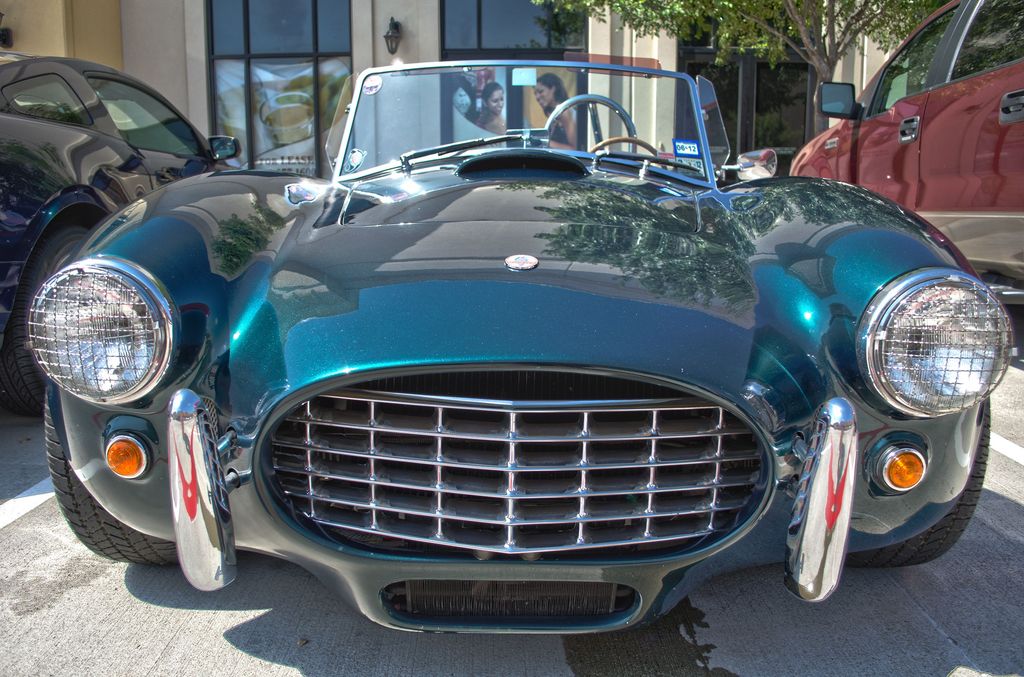
6. **Shelby Cobra 427:** Prepare to be absolutely thrilled by Carroll Shelby’s undisputed masterpiece: the 1966 Shelby Cobra 427. This legendary machine was born from an illustrious combination – a powerful Ford-sourced V8 engine brutally crammed into a small, lightweight British AC Ace body, a sports car known for its agility. The result was one of the most outstanding cars of all time, a sports car that was, quite simply, brutally fast.
The Cobra 427 merged agility with immense power, becoming a legend on the track and a true symbol of American ingenuity. It became one of the most replicated designs in automotive history, a testament to its timeless appeal. During its production between 1962 and 1967, it received numerous upgrades, reaching its peak capabilities with the 7.0-liter Ford 427 engine, delivering a colossal 485 horsepower.
This allowed it to achieve a top speed of an incredible 185 mph and blast from 0 to 60 mph in a mere 4.5 seconds! The enduring legacy of the Cobra 427 is celebrated by collectors and racers alike, admired for its performance and timeless design, truly representing the pinnacle of 1960s sports car engineering. Its success even led Shelby America to produce a limited edition of the original 427 Cobra in 2014 for the car’s 50th anniversary.
Car Model Information: 2020 Honda Accord EX-L 1.5T
Caption: AC Cobra 427
Layout: front-engine, rear-wheel drive layout
Manufacturer: AC Cars,Shelby American
Production: 1965–1967
Name: MkIII
Aka: AC Shelby Cobra , Shelby AC Cobra
BodyStyle: Roadster (automobile)
Assembly: Thames Ditton,Surrey,England
Predecessor: AC Ace
Class: Sports car
Successor: AC MK IV
Related: AC Frua,Shelby Daytona
Engine: convert,V8 engine
Wheelbase: 90 in
Abbr: on
Order: flip
Length: 156 in
Width: 68 in
Height: 48 in
Weight: 2355 lb
Categories: 1960s cars, AC vehicles, All articles with unsourced statements, Articles with short description, Articles with unsourced statements from December 2014
Summary: The AC Cobra, sold in the United States as the Shelby Cobra and AC Shelby Cobra, is a sports car manufactured by British company AC Cars, with a Ford V8 engine. It was produced intermittently in both the United Kingdom and later the United States since 1962.
Get more information about: AC Cobra
Buying a high-performing used car >>>
Brand: Shelby Model: Cobra 427
Price: $24,995 Mileage: 74,558 mi.
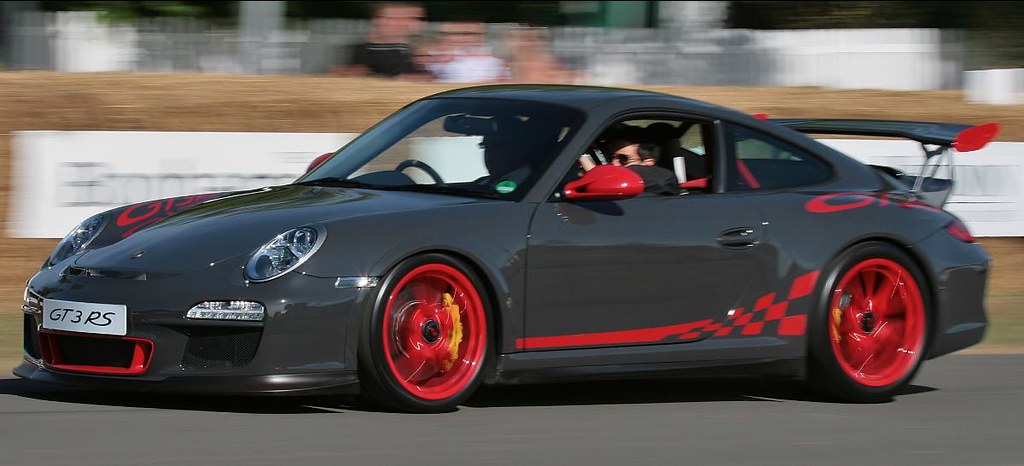
7. **Porsche 911:** Last but certainly not least for this section, we have the iconic Porsche 911, one of the most recognized and beloved vehicles ever produced by a European manufacturer. Debuting at the 1963 Frankfurt Motor Show as the 901 (briefly), it became an icon almost overnight, laying the groundwork for six decades of 911 evolution.
The 911 sported one of the first air-cooled engines of the era, a feature that immediately drew immense attention to the model and kicked off the company’s hugely successful boxer engine configuration that Porsche fans from all corners of the world have come to absolutely adore. Its rear-engine sports car design was groundbreaking, setting it apart and solidifying its place in automotive history.
Beyond its innovative engineering, the 911 boasted impressive handling and a beauty that was truly hard not to fall in love with. Its timeless silhouette and engineering excellence have made it a perpetual favorite among driving enthusiasts. The 911’s blend of tradition and innovation perfectly captures the essence of German automotive artistry, making it an enduring symbol of performance and style that continues to captivate.
Continuing our deep dive into the incredible cars from the 1960s, we’re steering straight into seven more unforgettable vehicles that left an indelible mark through their racing dominance, innovative engineering, and profound impact on popular culture. Get ready for more automotive legends that truly defined an era!
Car Model Information: 1987 Porsche 911
Name: Porsche 911
Caption: The 1 millionth 911 produced on display at Volkswagen Group Forum, Berlin
Designer: Ferdinand Alexander Porsche
Manufacturer: Porsche
Production: September 1964 – present
Assembly: Stuttgart,Baden-Württemberg
Class: Sports car
BodyStyle: unbulleted list
Related: unbulleted list
Layout: Rear-engine design,rear-wheel drive
Predecessor: Porsche 356
Categories: 1970s cars, 1980s cars, 1990s cars, 2+2 coupés, 2000s cars
Summary: The Porsche 911 model series (pronounced Nine Eleven or in German: Neunelf) is a family of German two-door, high performance rear-engine sports cars, introduced in September 1964 by Porsche AG of Stuttgart, Germany. Now in its eighth generation, all 911s have a rear-mounted flat-six engine, and usually 2+2 seating, except for special 2-seater variants. Originally, 911s had air-cooled engines, and torsion bar suspension, but the 911 has been continuously enhanced, and evolved across generations. Though the 911 core concept has remained largely unchanged, water-cooled engines were introduced with the 996 series in 1998, and front and rear suspension have been replaced by Porsche-specific MacPherson suspension up front, and independent multi-link rear suspension.
The 911 has been raced extensively by private and factory teams, in a variety of classes. It is among the most successful competition cars. In the mid-1970s, the naturally aspirated 911 Carrera RSR won world championship races including Targa Florio and the 24 Hours of Daytona. The 911-derived 935 turbo also won the 24 Hours of Le Mans in 1979. Porsche won the World Championship for Makes in 1976, 1977, 1978, and 1979 with 911-derived models.
In a 1999 poll to determine the Car of the Century, the 911 ranked fifth — one of two in the top five that had remained continuously in production (the original Beetle remained in production until 2003). The one millionth example was manufactured in May 2017 and is in the company’s permanent collection.
Get more information about: Porsche 911
Buying a high-performing used car >>>
Brand: Porsche Model: 911
Price: $234,950 Mileage: 6,992 mi.
Read more about: Porsche Unveils First Hybrid 911: Performance-Focused Icon Debuts This Summer
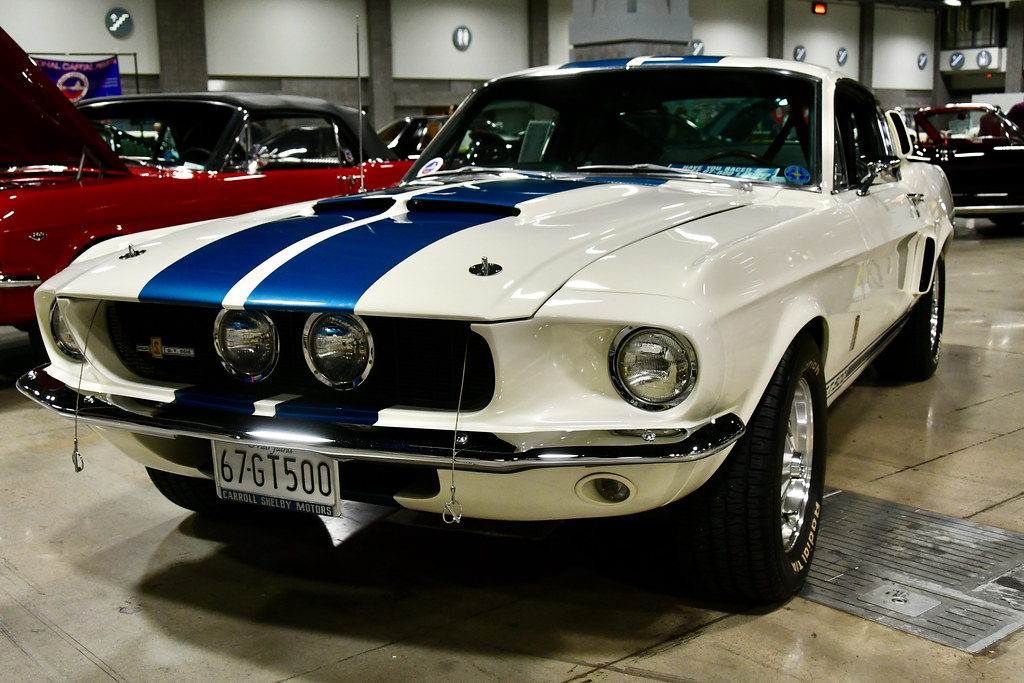
8. **1967 Shelby GT500**The 1960s were a fascinating time for American car manufacturers, and few embodied the spirit of raw power and innovation quite like Carroll Shelby. Taking the already beloved Ford Mustang concept, Shelby, a visionary in his own right, truly cranked up the dial, injecting it with an unparalleled dose of serious performance DNA. The result was the absolutely thrilling 1967 Shelby GT500, a machine that didn’t just drive, it roared its intentions on every street and track. This wasn’t just another variant; it was a carefully crafted beast, designed to dominate.
Underneath that stunning, timeless fastback styling lay the heart of a champion: a formidable 428 Police Interceptor engine. This power plant wasn’t just about moving the car; it was about propelling it with an intensity that truly represented the peak of 1960s pony-car excitement. Imagine the thrill of hitting the road with such a potent combination of brute force and elegant design! It’s this remarkable blend of overwhelming power and captivating style that instantly cemented the GT500’s status as an undeniable classic, capturing the vivid imaginations of car enthusiasts across the nation and beyond.
The legacy of the Shelby GT500 continues to burn brightly as a potent symbol of American muscle, a testament to an era when horsepower reigned supreme. Even today, decades later, this incredible machine is ardently celebrated by collectors and admirers who cherish its audacity and engineering prowess. Its enduring appeal and sheer performance capabilities ensure its rightful place as a beloved icon of automotive history, admired universally for its undeniable boldness and the sheer innovation it brought to the roads of the swinging sixties.
Read more about: The Enduring Magnetism of 1960s American Iron: A Deep Dive into the Decade’s Automotive Icons
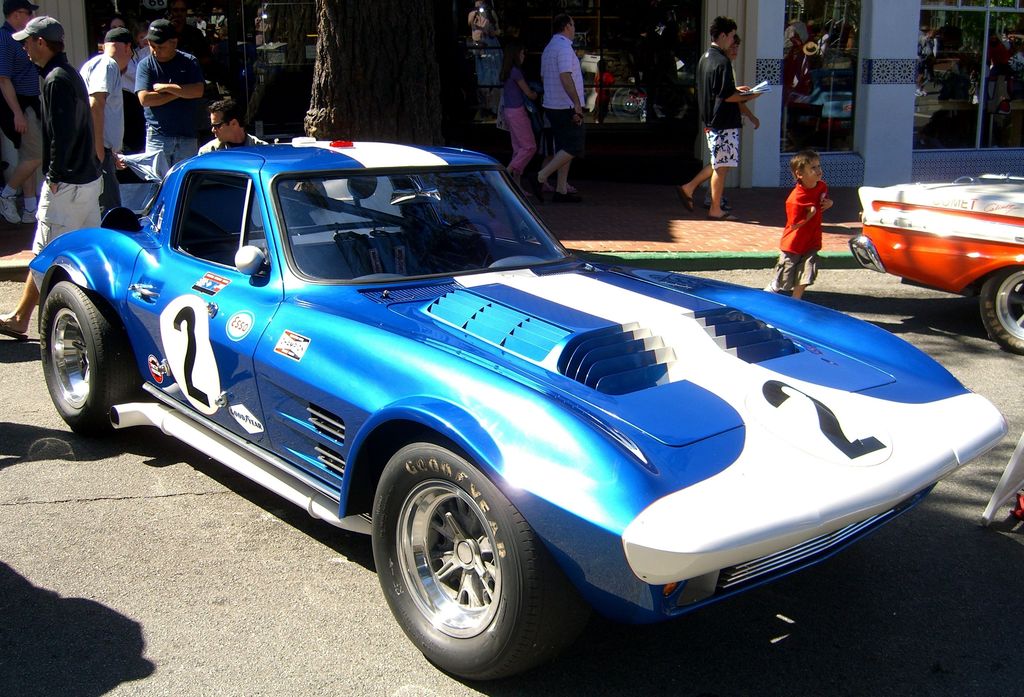
9. **1963 Corvette Grand Sport (Homologation Special)**If you thought the 1963 Chevrolet Corvette Sting Ray was something special, just wait until you hear about its almost mythical sibling, the 1963 Corvette Grand Sport. This wasn’t a car built for mass consumption; it was a clandestine, exhilarating project, conceived in secret with one clear mission: to challenge and ultimately dominate the formidable Shelby Cobras on the racetrack. The sheer audacity of this ambition, coupled with its ultra-high performance goals, ensured that only a precious five of these incredible machines were ever built, making them astonishingly rare.
This extreme rarity, combined with their incredible capabilities, has elevated the Grand Sport to a near-mythical status among automotive enthusiasts and collectors alike. Imagine owning a piece of history that was born from a direct rivalry between two giants of American performance! Its combination of blistering speed and unparalleled exclusivity continues to captivate those who appreciate not just a car, but a piece of racing lore, a vehicle that pushed boundaries and redefined what an American sports car could be.
The 1963 Corvette Grand Sport truly stands as a pinnacle of 1960s American sports car innovation. It’s admired for its undeniably bold design, which hinted at its aggressive intentions, and its impeccable racing pedigree, which proved its worth on the competitive circuits of the era. Its legacy as a powerful symbol of performance excellence is cemented in automotive history, cherished and celebrated not only for its almost unimaginable rarity but also for its profound and lasting impact on the world of racing.
Car Model Information: 2020 Honda Accord EX-L 1.5T
Name: Chevrolet Corvette (C2)
Caption: 1963 Chevrolet Corvette Sport Coupe
Manufacturer: Chevrolet
Aka: Chevrolet Corvette Sting Ray
Production: August 1962–July 1967
ModelYears: 1963–1967
Platform: Series 0800 (1962-1964),Series 194 (1965-1967)
Chassis: Body-on-frame
Assembly: St. Louis, Missouri
Predecessor: Chevrolet Corvette (C1)
Successor: Chevrolet Corvette (C3)
Class: Sports car
BodyStyle: Convertible (car),coupé
Layout: Front-engine, rear-wheel-drive layout
Engine: {{cvt,327,cuin,L,1,Chevrolet small-block engine#327,V8 engine
Wheelbase: cvt
Length: cvt
Width: cvt
Height: cvt
Weight: cvt
Transmission: manual transmission,manual transmission,Powerglide
Related: Bill Thomas Cheetah
Designer: Larry Shinoda
Categories: 1960s cars, All articles needing additional references, All articles with specifically marked weasel-worded phrases, All articles with unsourced statements, Articles needing additional references from July 2024
Summary: The Chevrolet Corvette (C2) is the second-generation Corvette sports car, produced by the Chevrolet division of General Motors (GM) for the 1963 through 1967 model years.
Get more information about: Chevrolet Corvette (C2)
Buying a high-performing used car >>>
Brand: Chevrolet Model: Corvette Grand Sport
Price: $24,995 Mileage: 74,558 mi.
Read more about: The Enduring Magnetism of 1960s American Iron: A Deep Dive into the Decade’s Automotive Icons
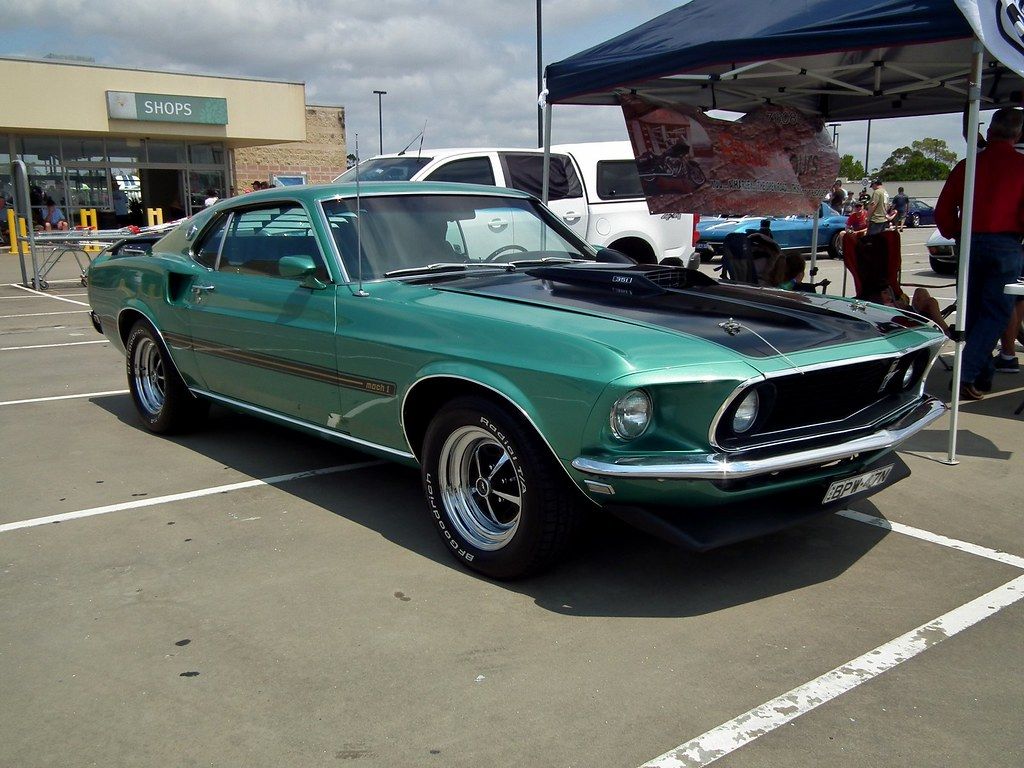
10. **1969 Ford Mustang Boss 429**Just when you thought the Ford Mustang couldn’t get any wilder, along came the 1969 Ford Mustang Boss 429, a true titan of the muscle car era. This wasn’t merely another iteration; it was a beast forged in the fires of competitive racing, specifically designed for NASCAR. At its heart lay a monumental semi-hemi 429 engine, a powertrain so immense and powerful it made this particular Mustang one of the most audacious and exhilarating vehicles ever to roll off Ford’s production lines. It was a clear statement of intent, embodying the “bigger is better” philosophy that defined American performance in the late sixties.
The very nature of its specialized purpose meant that only a limited number of these incredible machines were ever produced. These low production numbers, in turn, have only amplified its collectible status, transforming it into an incredibly sought-after prize among muscle car enthusiasts and serious collectors worldwide. The Boss 429 wasn’t just a car; it was a legend in its own right, carving out its reputation on the track thanks to that incredible combination of raw power and undeniable exclusivity.
This spectacular vehicle truly stands as a shining symbol of American performance engineering at its most ambitious. It represents the absolute pinnacle of 1960s muscle car innovation, a testament to an era when automakers pushed boundaries to create cars that delivered pure, unadulterated excitement. To this day, the 1969 Ford Mustang Boss 429 continues to inspire and captivate collectors around the globe, admired universally for its earth-shaking raw power, its undeniably bold design, and the indelible mark it left on automotive history.
Car Model Information: 1966 Ford Mustang Base
Name: Ford Mustang
Caption: 2018 Ford Mustang GT 5.0
Aka: Ford T5 (Germany)
Manufacturer: Ford Motor Company
Production: March 1964 – present
ModelYears: 1965–present
Class: Unbulleted list
BodyStyle: Unbulleted list
Layout: Front-engine, rear-wheel-drive layout
Categories: 1970s cars, 1980s cars, 1990s cars, 2+2 coupés, 2000s cars
Summary: The Ford Mustang is a series of American automobiles manufactured by Ford. In continuous production since 1964, the Mustang is currently the longest-produced Ford car nameplate. Currently in its seventh generation, it is the fifth-best selling Ford car nameplate. The namesake of the “pony car” automobile segment, the Mustang was developed as a highly styled line of sporty coupes and convertibles derived from existing model lines, initially distinguished by “long hood, short deck” proportions.
Originally predicted to sell 100,000 vehicles yearly, the 1965 Mustang became the most successful vehicle launch since the 1927 Model A. Introduced on April 17, 1964 (16 days after the Plymouth Barracuda), over 400,000 units were sold in its first year; the one-millionth Mustang was sold within two years of its launch. In August 2018, Ford produced the 10-millionth Mustang; matching the first 1965 Mustang, the vehicle was a 2019 Wimbledon White convertible with a V8 engine.
The success of the Mustang launch led to multiple competitors from other American manufacturers, including the Chevrolet Camaro and Pontiac Firebird (1967), AMC Javelin (1968), and Dodge Challenger (1970). It also competed with the Plymouth Barracuda, which was launched around the same time. The Mustang also had an effect on designs of coupes worldwide, leading to the marketing of the Toyota Celica and Ford Capri in the United States (the latter, by Lincoln-Mercury). The Mercury Cougar was launched in 1967 as a unique-bodied higher-trim alternative to the Mustang; during the 1970s, it included more features and was marketed as a personal luxury car.
From 1965 until 2004, the Mustang shared chassis commonality with other Ford model lines, staying rear-wheel-drive throughout its production. From 1965 to 1973, the Mustang was derived from the 1960 Ford Falcon compact. From 1974 until 1978, the Mustang (denoted Mustang II) was a longer-wheelbase version of the Ford Pinto. From 1979 until 2004, the Mustang shared its Fox platform chassis with 14 other Ford vehicles (becoming the final one to use the Fox architecture). Since 2005, Ford has produced two generations of the Mustang, each using a distinct platform unique to the model line.
Through its production, multiple nameplates have been associated with the Ford Mustang series, including GT, Mach 1, Boss 302/429, Cobra (separate from Shelby Cobra), and Bullitt, along with “5.0” fender badging (denoting 4.9 L OHV or 5.0 L DOHC V8 engines).
Get more information about: Ford Mustang
Buying a high-performing used car >>>
Brand: Ford Model: Mustang
Price: $32,991 Mileage: 98,811 mi.
Read more about: Over 300,000 Vehicles Recalled: A Comprehensive Guide to Recent Safety Notices from Range Rover, Ford, and Nissan
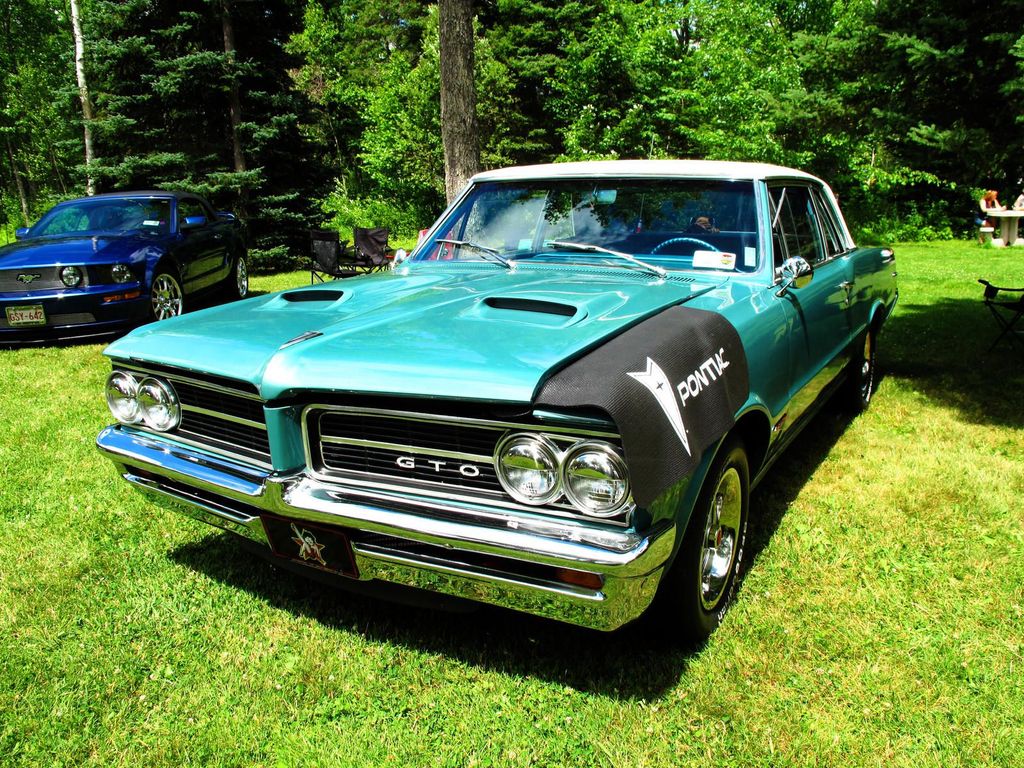
11. **1964 Pontiac GTO**When we talk about the very birth of the muscle car phenomenon, one name stands out prominently: the 1964 Pontiac GTO. While there might be debates about the “first” muscle car, the GTO is unequivocally credited with igniting the wildfire that became the muscle-car era, setting the entire American automotive industry ablaze with competitive fervor. It wasn’t just a car; it was a revolution on wheels, boldly taking a massive V8 engine and stuffing it into a relatively unassuming mid-size body. This groundbreaking concept delivered exhilarating performance in a package that was surprisingly accessible, making it an instant and highly affordable icon for anyone craving a taste of serious power.
The GTO didn’t just capture the imagination of enthusiasts; it effectively started an all-out horsepower race among manufacturers across the United States, prompting every major player to respond with their own high-performance offerings. This vehicle perfectly blended formidable power with an undeniable sense of style, setting a completely new standard for what a muscle car could and should be. It became an essential cornerstone of 1960s American car culture, defining an entire generation’s desire for speed, excitement, and a distinctive presence on the road.
Today, the GTO’s profound legacy is deeply cherished by collectors and historians alike. They appreciate its pivotal role in shaping automotive history and recognize how it so perfectly embodied the era’s relentless pursuit of pure speed and accessible power. The 1964 Pontiac GTO remains a timeless testament to American ingenuity, a symbol of a golden age when a simple option package could unleash a motoring legend.
Car Model Information: 1966 Pontiac GTO Coupe
Name: Pontiac GTO
Caption: 2005 Pontiac GTO
Manufacturer: Pontiac (automobile),Holden
Class: Mid-size car,Compact car,Mid-size car
Production: 1963–1974,2003–2006
Predecessor: Pontiac Tempest
Layout: Front-engine, rear-wheel-drive layout
Categories: 1970s cars, 2000s cars, All articles with unsourced statements, Articles with short description, Articles with unsourced statements from October 2008
Summary: The Pontiac GTO is a front-engine, rear-drive, two-door, and four-passenger automobile manufactured and marketed by the Pontiac division of General Motors over four generations from 1963 until 1974 in the United States — with a fifth generation made by GM’s Australian subsidiary, Holden, for the 2004 through 2006 model years.
The first generation of the GTO is credited with popularizing the muscle car market segment in the 1960s. Some consider the Pontiac GTO to have started the trend with all four domestic automakers offering a variety of competing models.
For the 1964 and 1965 model years, the GTO was an optional package on the intermediate-sized Pontiac LeMans. The 1964 GTO vehicle identification number (VIN) started with 22, while the 1965 GTO VIN began with 237. The GTO was designated as a separate Pontiac model from 1966 through 1971 (VIN 242…). It became an optional package again for the 1972 and 1973 intermediate LeMans. For 1974, the GTO was an optional trim package on the compact-sized Ventura.
The GTO model was revived for the 2004 through 2006 model years as a captive import for Pontiac, a left-hand drive version of the Holden Monaro, itself a coupé variant of the Holden Commodore.
Get more information about: Pontiac GTO
Buying a high-performing used car >>>
Brand: Pontiac Model: GTO
Price: $59,991 Mileage: 4,408 mi.
Read more about: Classic Cars Worth a Fortune: See the Models Skyrocketed in Value

12. **1969 Plymouth Road Runner**In an era brimming with powerful muscle cars, the 1969 Plymouth Road Runner brought a delightful blend of raw power and unpretentious charm. You couldn’t miss it, not least because it proudly bore the name of the iconic cartoon bird and even came complete with its very own, instantly recognizable ‘beep-beep’ horn! This wasn’t about lavish luxury or overly complex engineering; the Road Runner was designed to be a budget-friendly muscle car, delivering an astonishing punch of performance and personality without demanding a hefty price tag. It was the epitome of accessible excitement, truly for the people.
Its straightforward, no-nonsense design, coupled with a range of incredibly powerful engine options, made it instantly appealing and accessible to a wide spectrum of enthusiasts across America. This car perfectly captured the vibrant, fun-loving, yet fiercely competitive spirit of 1960s American muscle. It spoke directly to those who yearned for thrilling speed and exhilarating performance but didn’t want to break the bank to achieve it. The Road Runner proved that you didn’t need to be an elite racer to experience the joy of unadulterated power and a fantastic driving experience.
As a cherished classic, the 1969 Plymouth Road Runner remains a beloved symbol of accessible performance and groundbreaking innovation. Its unique blend of playful charm and robust capabilities continues to be celebrated by collectors and fans who appreciate its honesty, its raw power, and the sheer joy it brought to the roads. It stands as a reminder that the muscle car era was about more than just brute force; it was about bringing the thrill of high performance to everyday drivers, and the Road Runner did it with a distinctive flair.
Car Model Information: 2020 Honda Accord EX-L 1.5T
Name: Plymouth Road Runner
Assembly: Detroit,Michigan
Manufacturer: Plymouth (automobile)
Class: Mid-size car
Production: 1968–1980
Related: unbulleted list
Layout: FR layout
Categories: 1970s cars, 1980s cars, All articles needing additional references, All articles with peacock terms, All articles with unsourced statements
Summary: The Plymouth Road Runner is a muscle car introduced by Chrysler in the United States for the 1968 model year and marketed under its Plymouth brand. Initially based on the Belvedere, the brand’s basic mid-size model, the Road Runner combined a powerful engine with a spartan trim level and a price that undercut increasingly upscale and expensive muscle cars such as the Pontiac GTO and Plymouth’s own GTX. It was initially a sales success.
The Road Runner was built in three generations on the mid-size B platform. Like most muscle cars, its performance and sales declined in the 1970s due to an increasing focus on fuel economy and the adoption of more stringent U.S. emission standards. The nameplate became to a trim package for the compact Plymouth Volaré for model year 1976—no longer offering any special performance capability—and was discontinued in 1980.
Get more information about: Plymouth Road Runner
Buying a high-performing used car >>>
Brand: Plymouth Model: Road Runner
Price: $24,995 Mileage: 74,558 mi.
Read more about: Debunking the Myth: Unearthing the True Origins of the American Muscle Car Phenomenon
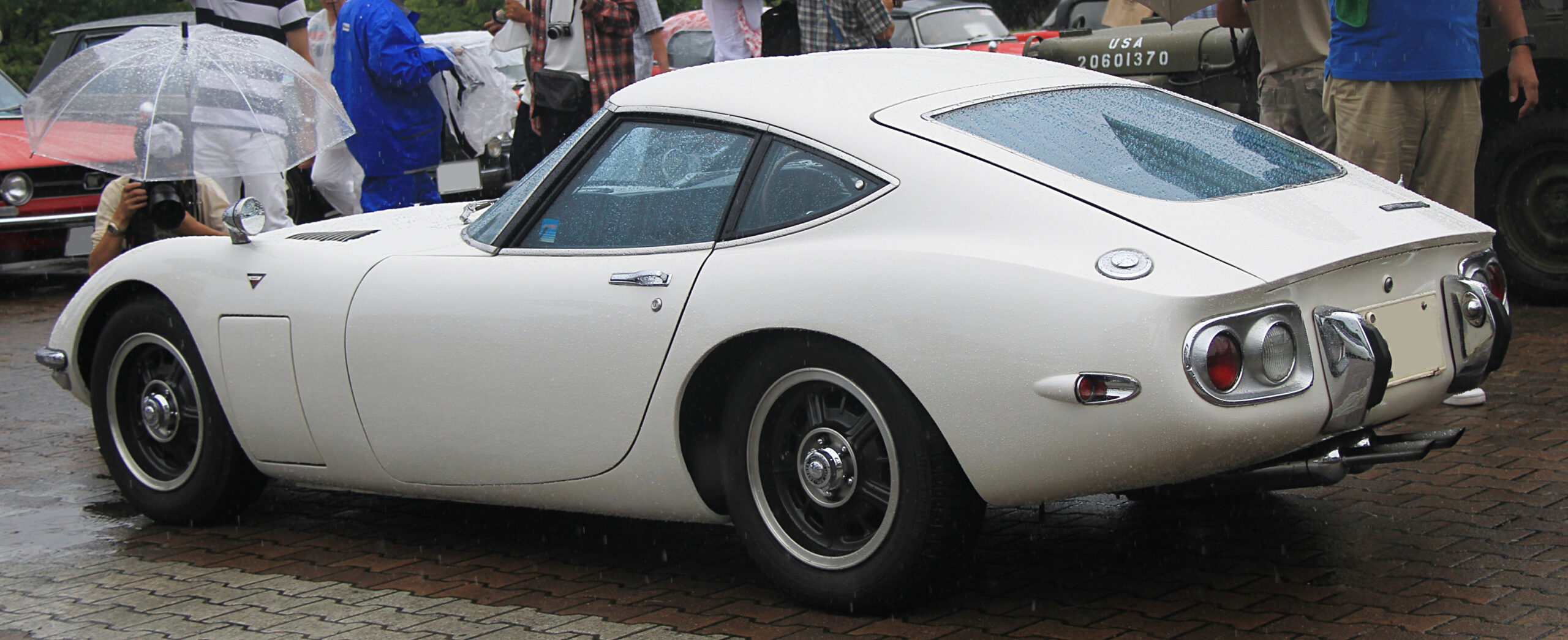
13. **1967 Toyota 2000GT**While American muscle cars and European grand tourers dominated headlines, an unexpected star emerged from the East, poised to make its own indelible mark on the global automotive stage: the 1967 Toyota 2000GT. This sleek, utterly gorgeous coupe wasn’t just another car; it was the vehicle that definitively put Japan on the global sports-car map, challenging preconceived notions and proving that Japanese manufacturers could compete with the best in the world. Its arrival was a quiet revolution, showcasing a level of sophistication and performance that few expected.
At its core, the 2000GT featured a meticulously Yamaha-tuned inline-six engine, a powerhouse perfectly complemented by its exquisitely elegant design. The attention to detail from the Japanese manufacturer was evident in every curve and contour, creating a stunning silhouette that was reportedly inspired by the iconic Jaguar E-Type. Its limited production numbers only added to its mystique, making it an incredibly desirable and collectible car from the moment it rolled off the assembly line. This was a car that resonated with enthusiasts who valued precision and beauty in equal measure.
The 2000GT’s remarkable success in international racing, coupled with its distinctively futuristic styling, rapidly cemented its status as a powerful symbol of Japanese automotive innovation. Its legacy as a groundbreaking sports car continues to be celebrated, standing as a testament to Toyota’s burgeoning commitment to excellence and high-performance vehicle design. As a classic, the 1967 Toyota 2000GT stands tall, showcasing the truly global reach of 1960s automotive design and admired universally for its breathtaking beauty and the sheer brilliance of its engineering.
Read more about: How Well Do You Know Classic Cars? Try Taillight Identification Quiz
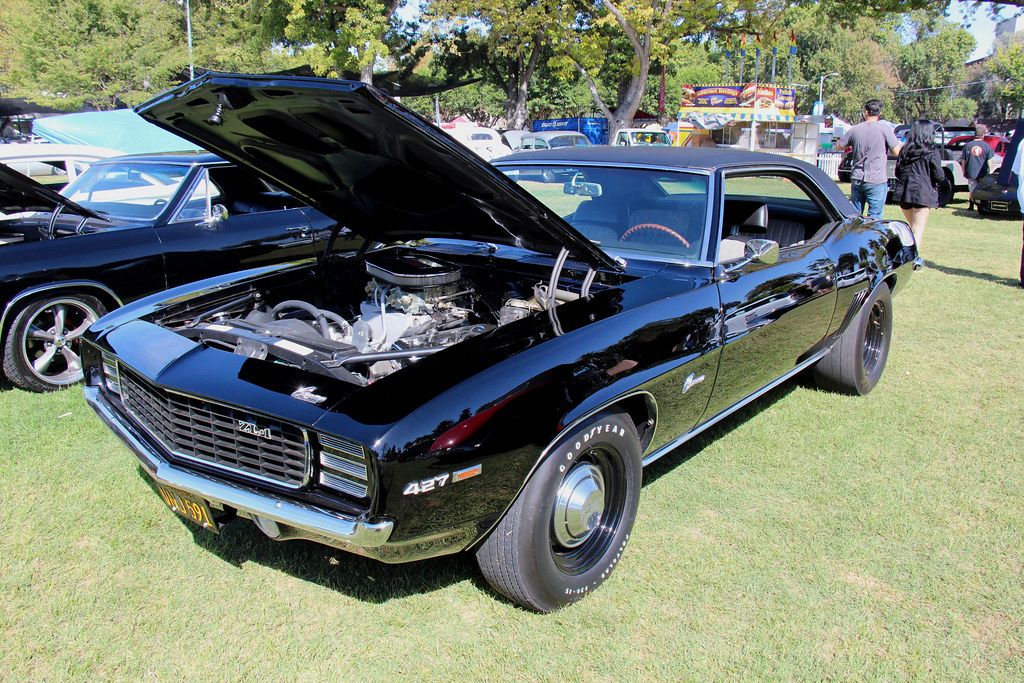
14. **1969 Chevrolet Camaro ZL1**For those who thought muscle cars had reached their peak, the 1969 Chevrolet Camaro ZL1 emerged not just as another variant, but as a legendary, purpose-built “drag-strip weapon.” This wasn’t a car designed for casual cruises; it was engineered for one thing: pure, unadulterated speed. At its heart beat an all-aluminum 427-cubic-inch engine, a powerhouse so formidable that it instantly granted the ZL1 a near-mythical status among performance enthusiasts. It was a clear declaration of Chevrolet’s prowess, pushing the boundaries of what was possible.
What truly sets the ZL1 apart, elevating it beyond even its powerful siblings, is its incredible rarity. With only a mere 69 units ever built, it stands as one of the rarest high-performance Chevys ever created, making it a Holy Grail for collectors worldwide. This combination of formidable power, achieved through its lightweight design, ensured its place as an undisputed legend on the drag strip, where it showcased unmatched speed and acceleration, leaving competitors in its dust.
The exclusivity and impeccable racing pedigree of the 1969 Chevrolet Camaro ZL1 continue to captivate enthusiasts and collectors to this very day. It represents the absolute zenith of Chevrolet’s performance engineering during the electrifying muscle car era, a period when American automakers truly let loose. Celebrated for its unmatched speed and its truly unique place in automotive lore, the ZL1 remains an iconic testament to an era of unbridled horsepower and audacious design.
Conclusion
The 1960s were, without a doubt, a dazzling kaleidoscope of innovation, style, and sheer automotive passion. Our journey through these 14 iconic vehicles has merely scratched the surface of a decade that truly redefined what cars could be, blending stunning aesthetics with groundbreaking engineering. From the sleek lines of European sports cars that captured the essence of elegance to the roaring V8s of American muscle machines that embodied raw power and freedom, each car on our list tells a unique story of ingenuity and cultural impact.
Car Model Information: 1968 Chevrolet Camaro
Name: Chevrolet Camaro
Manufacturer: Chevrolet
Production: 1966–2002,2009–2023
ModelYears: 1967–2002,2010–2024
Class: Pony car
BodyStyle: coupe,convertible
Platform: GM F platform,GM Zeta platform,GM Alpha platform
Layout: Front-engine, rear-wheel-drive layout
Categories: 1970s cars, 1980s cars, 1990s cars, 2+2 coupés, 2000s cars
Summary: The Chevrolet Camaro is a mid-size American automobile manufactured by Chevrolet, classified as a pony car. It first went on sale on September 29, 1966, for the 1967 model year and was designed to compete with the Ford Mustang. The Camaro shared its platform and major components with the Firebird, produced by General Motors’ Pontiac division that was also introduced for the 1967 model year.
Four distinct generations of the Camaro were developed before production ended in 2002. The nameplate was revived on a concept car that evolved into the fifth-generation Camaro; production started on March 16, 2009.
Production of the sixth generation of the Camaro ended in December 2023, for the 2024 model year.
Get more information about: Chevrolet Camaro
Buying a high-performing used car >>>
Brand: Chevrolet Model: Camaro
Price: $79,980 Mileage: 1,713 mi.
Read more about: Unearthing Automotive Legends: 14 of the Rarest American Muscle Cars That Command the Roads
These aren’t just old cars; they are timeless icons, cherished by collectors and admired by enthusiasts for the indelible mark they left on automotive history. They remind us of a “Golden Era” when design was bold, performance was exhilarating, and cars were more than just transportation – they were expressions of dreams and aspirations. Whether you’re a long-time classic car aficionado or just someone who appreciates a stunning piece of machinery, the legacy of these unforgettable 1960s cars continues to captivate, proving that true greatness never fades.

